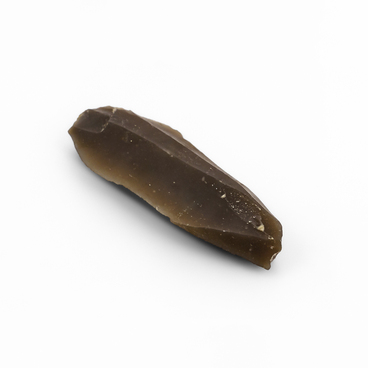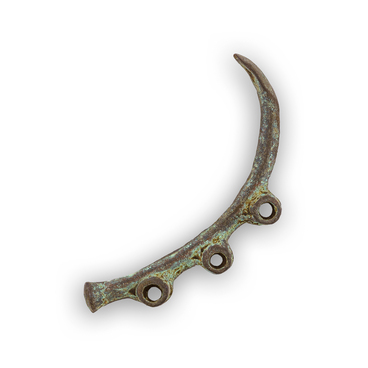During the Middle Ages, people did not have pockets in their clothing. Instead, items were stored in pouches suspended from a belt or tied directly to it. Goods, equipment, and other items that had to be carried on horses, in carts, or kept in houses and on the streets were attached mostly using ropes and knots. A large number of ropes and various strings were used in daily life. Fishing gear, such as nets, was woven from rope. It was easy to tie a secure knot, with only a small amount of training. However, in order to undo a tightly tied knot, a special tool would be needed.
A detangling tool was a special device with a rounded base. It was used to undo tight knots, unravel nets, and ropes, and in situations where a tool with a sharp edge was needed. For better portability, a hole was drilled in the blunt end of a detangler and a leather cord was threaded through it.
The historical origins of detangling tools can be traced back to the Steppe nomads, for whom these devices were a traditional part of their way of life. Bone detanglers spread to Rus and Scandinavia, where they became common household items. Household detangling tools were often simple, consisting of unadorned pieces of bone or horn with a pointed edge. However, the tools belonging to wealthy individuals were often elaborately carved. Most commonly, craftsmen depicted a beast with a hole in its mouth for the cord. This was not simply a functional tool, but also a decorative element that signaled the status of its owner. In addition, these decorated tools likely held a sacred significance, as the tangle may have served as an amulet.
Scientists found this detangler in the settlement of the Don Slavs near the village of Titchikha, which was the southernmost Slavic settlement on the Don. In the 10th century, this Slavic territory had not yet become part of Kievan Rus and was a tributary to the Khazars. The Khazar Khaganate occupied an enormous territory, stretching from the south to the east. The Slavic-Khazar boundary zone became one of the areas where interaction and cultural exchange between the steppe and forest worlds prospered. The finds of pottery of mixed styles and other ethno-markers suggest that there were interethnic marriages in that area as well.





